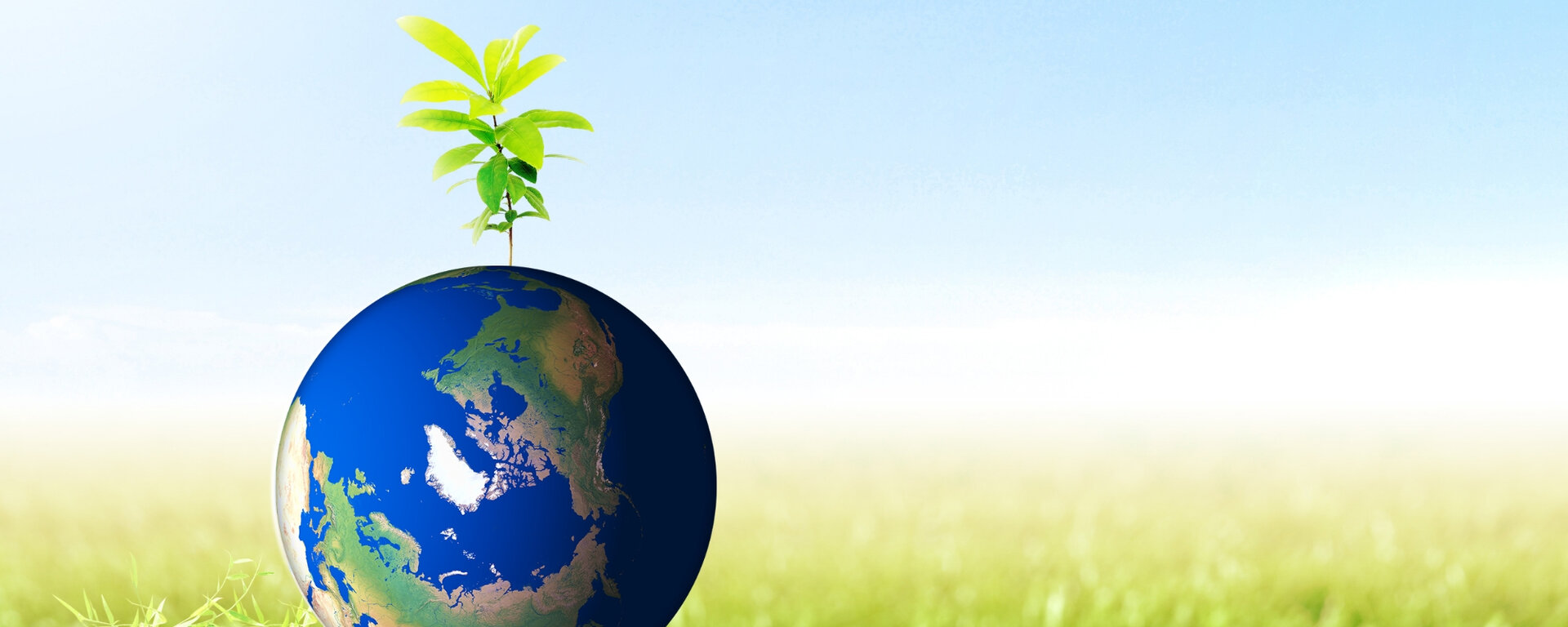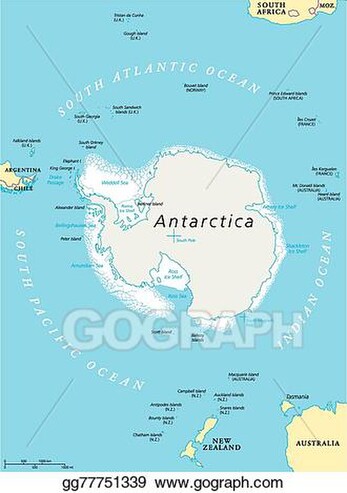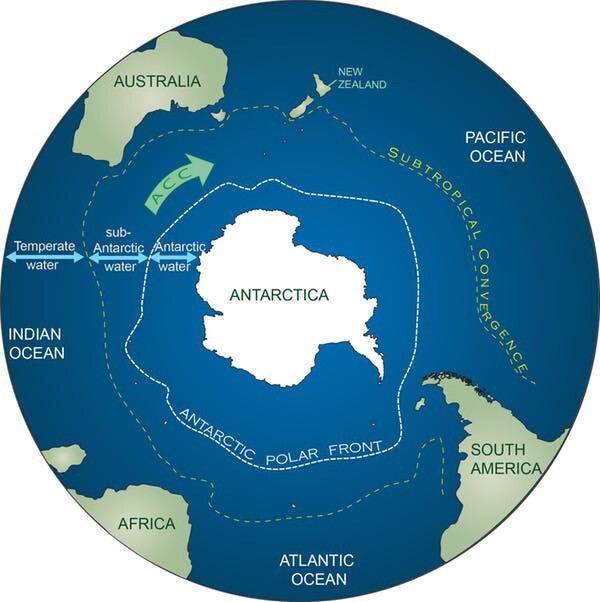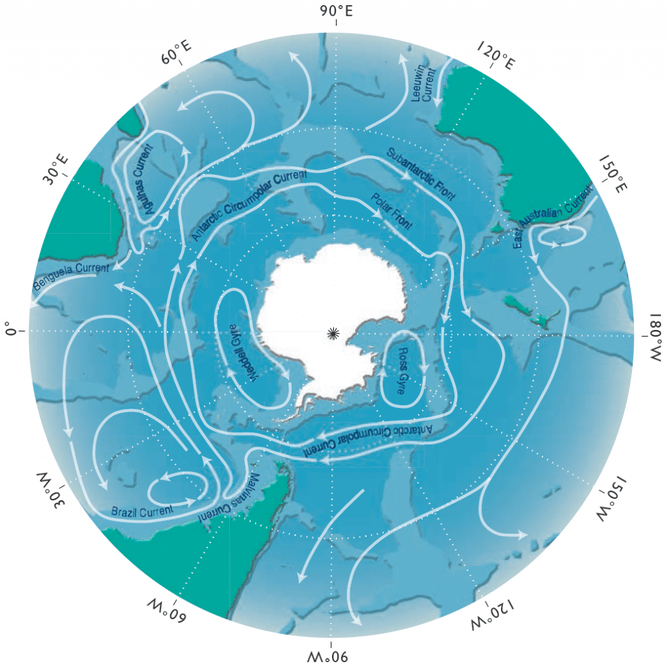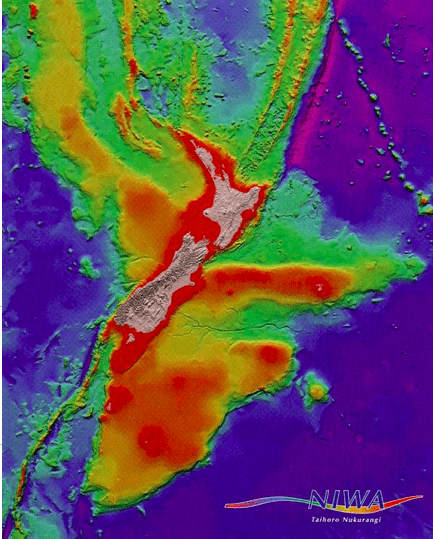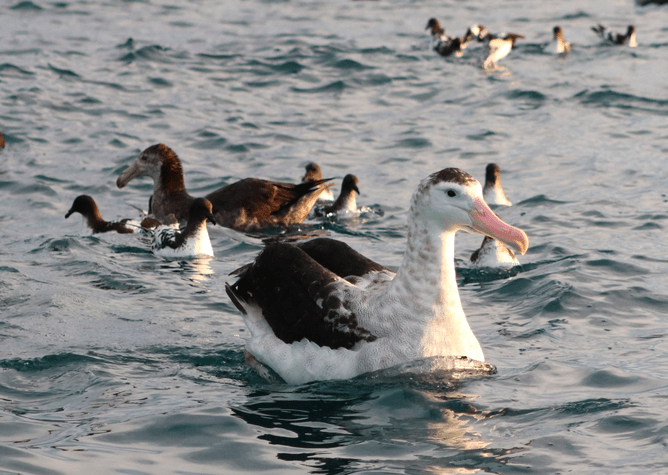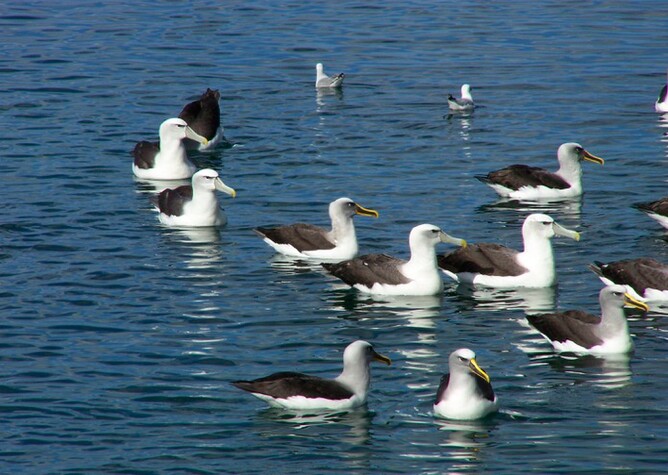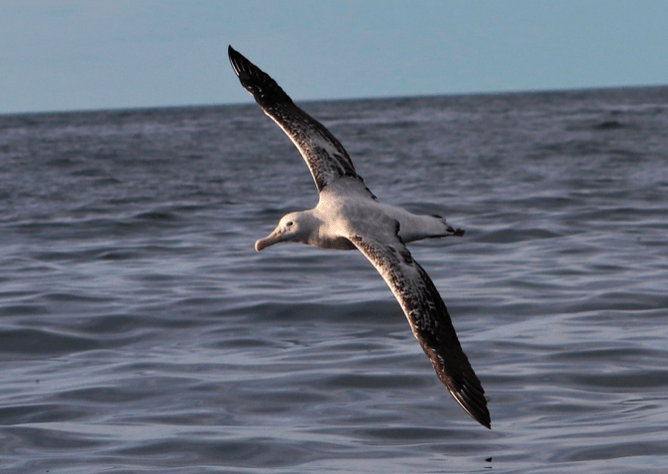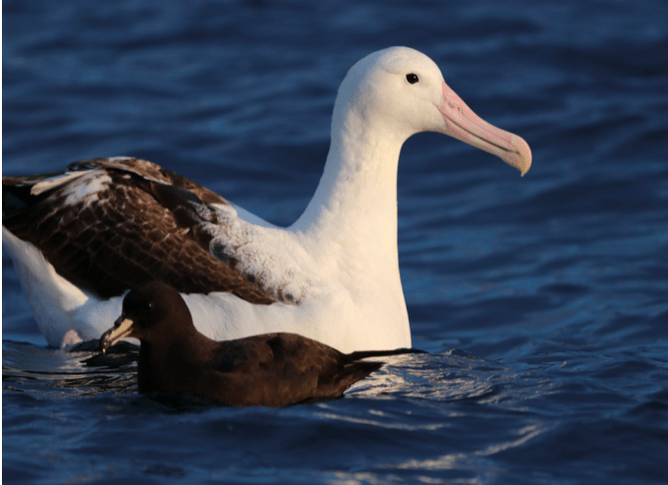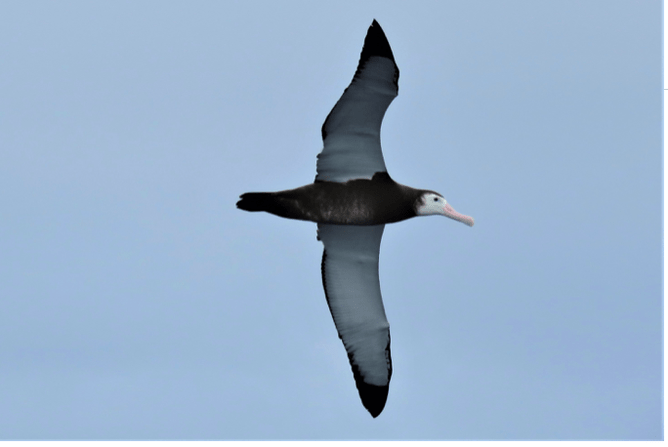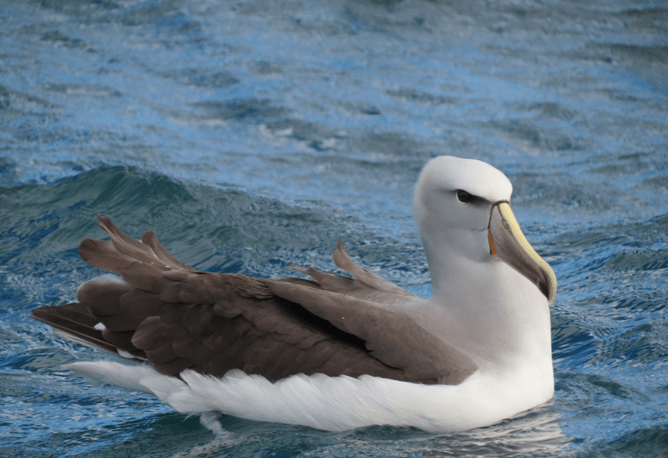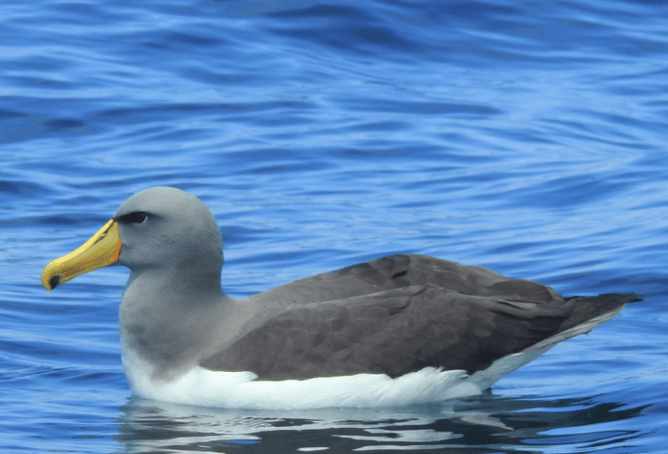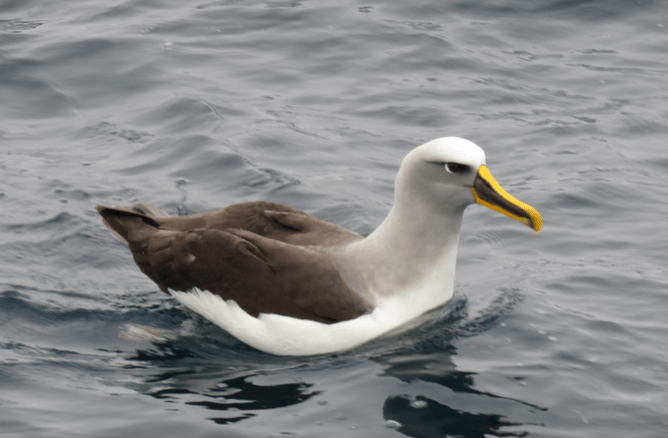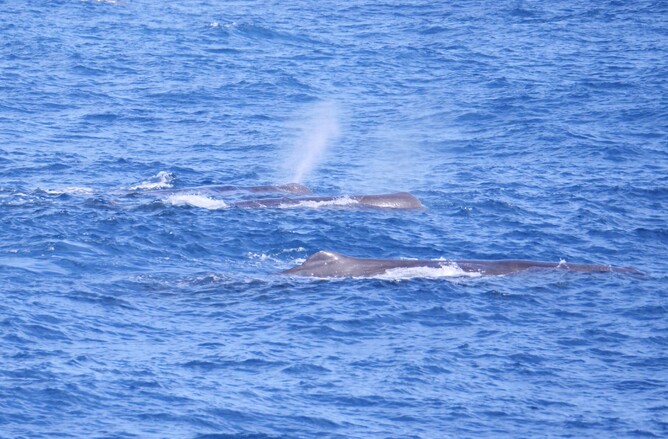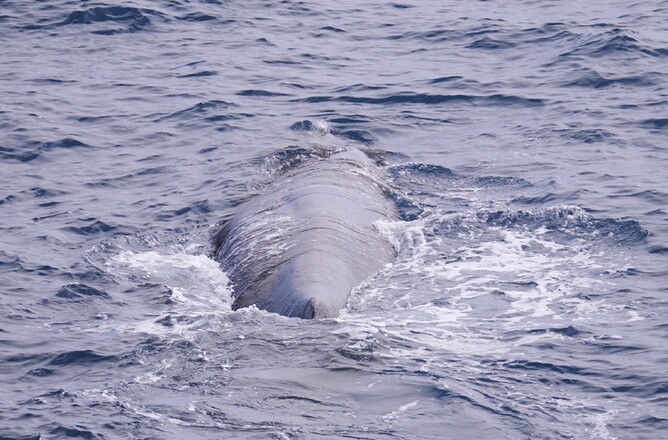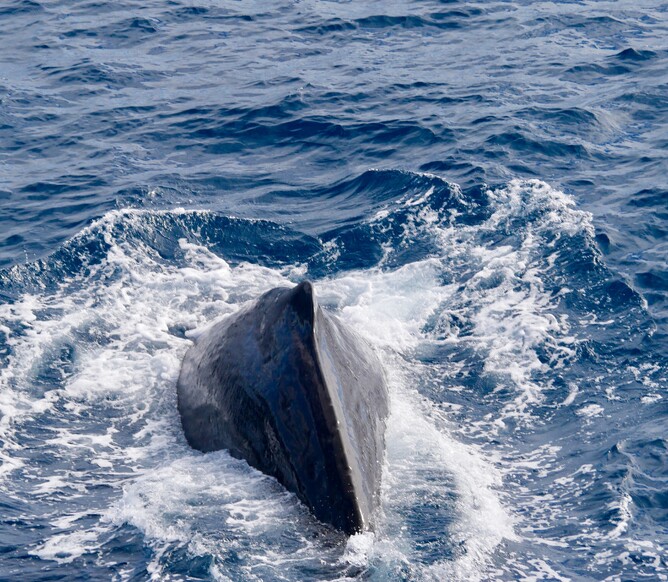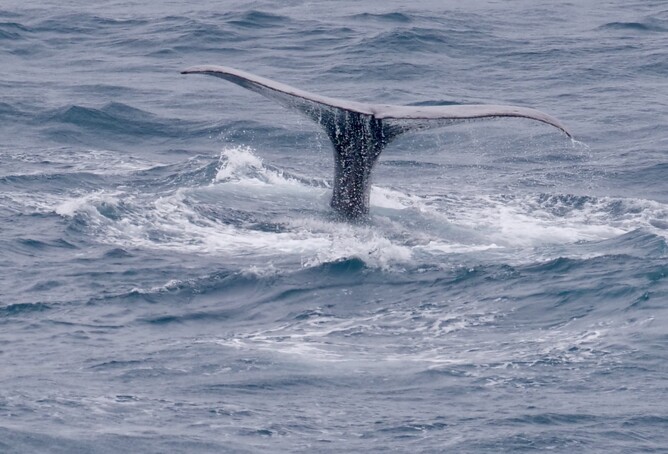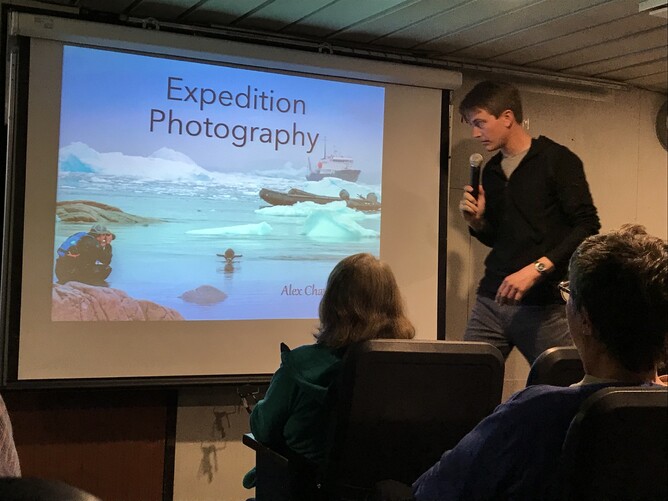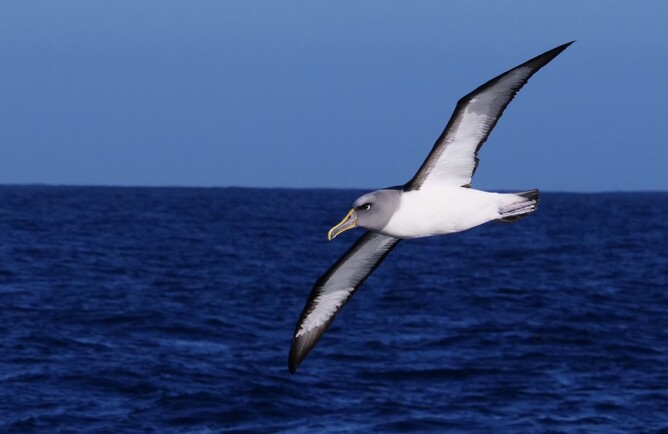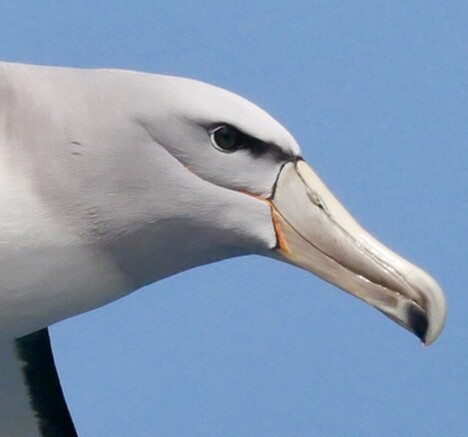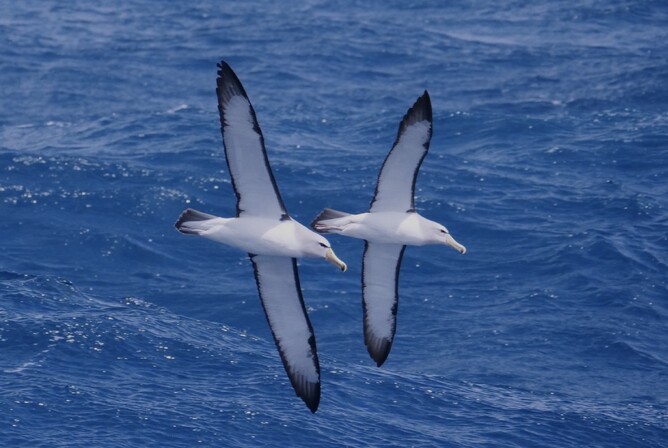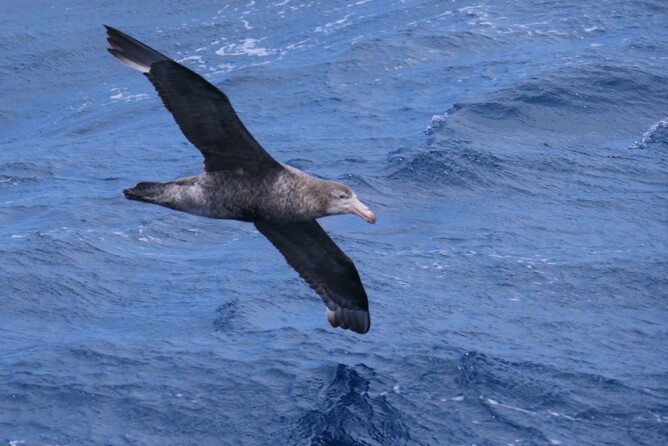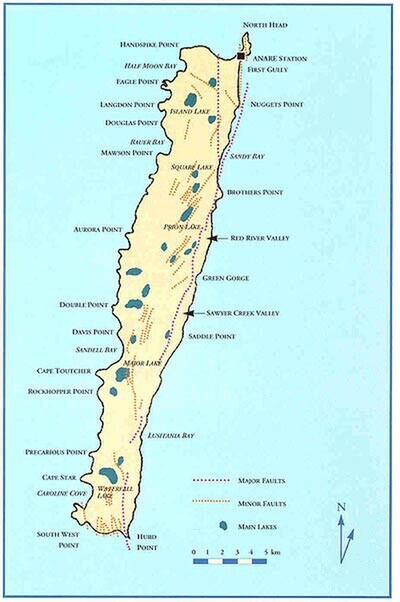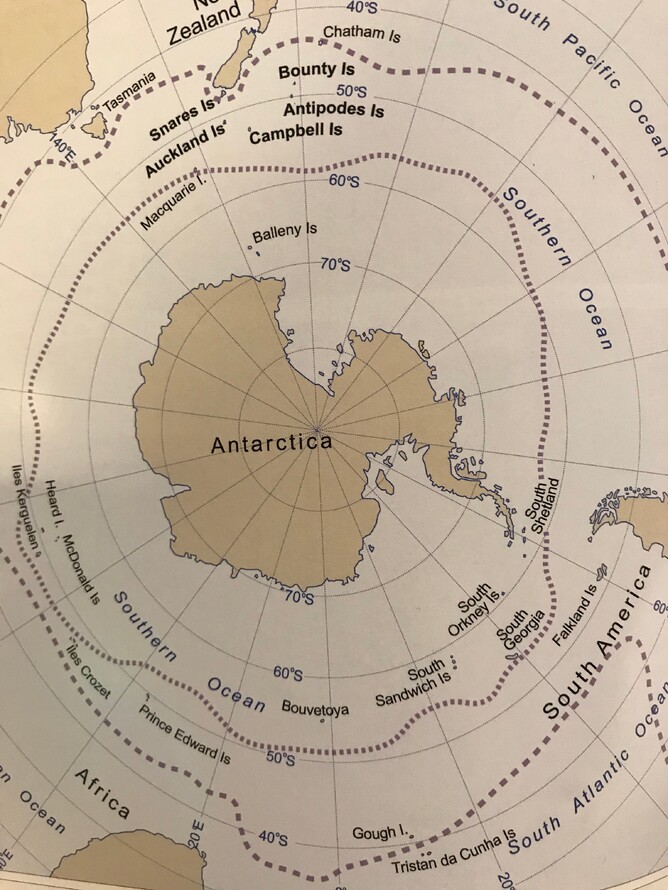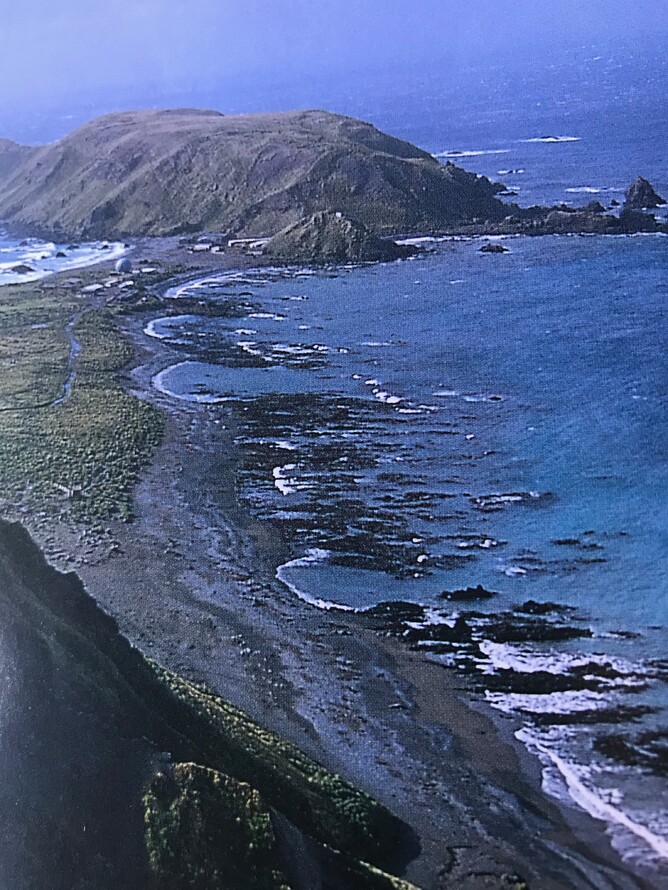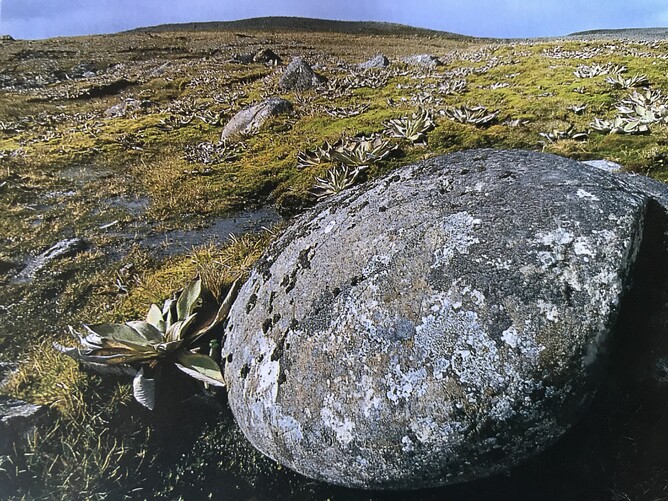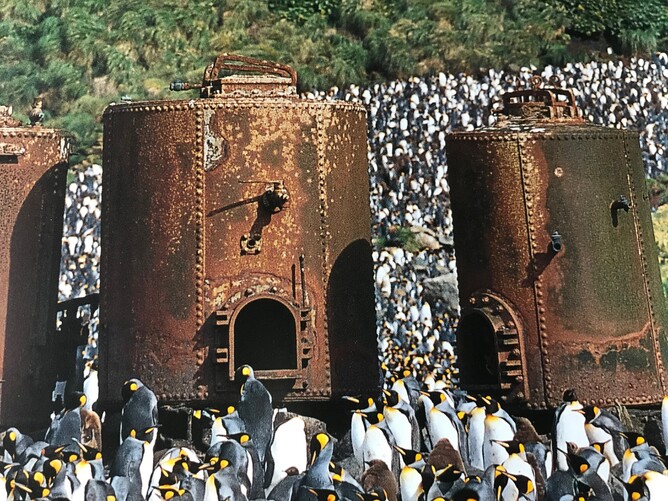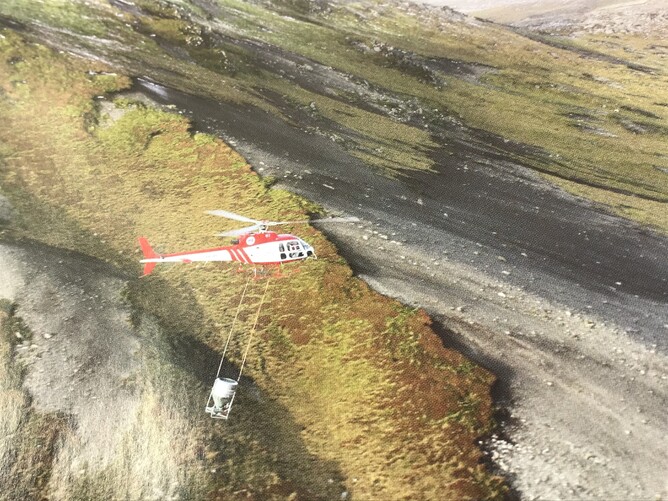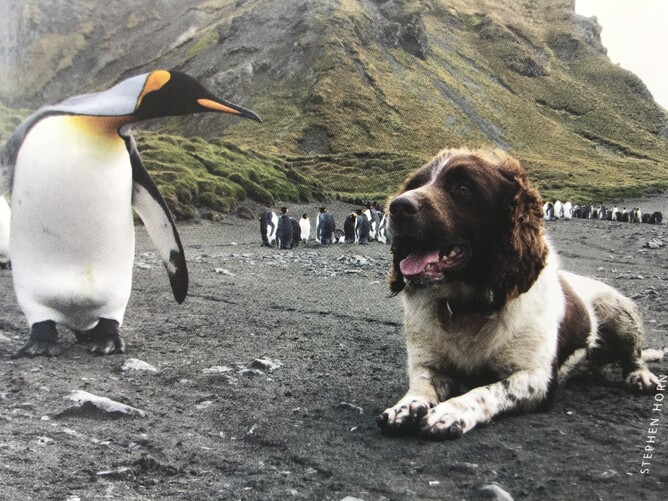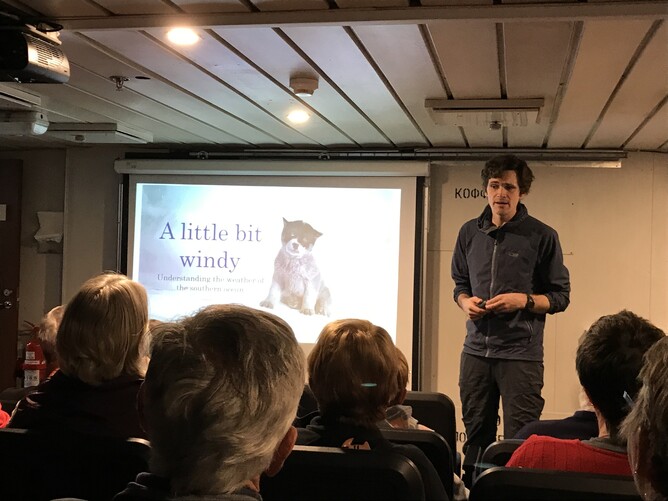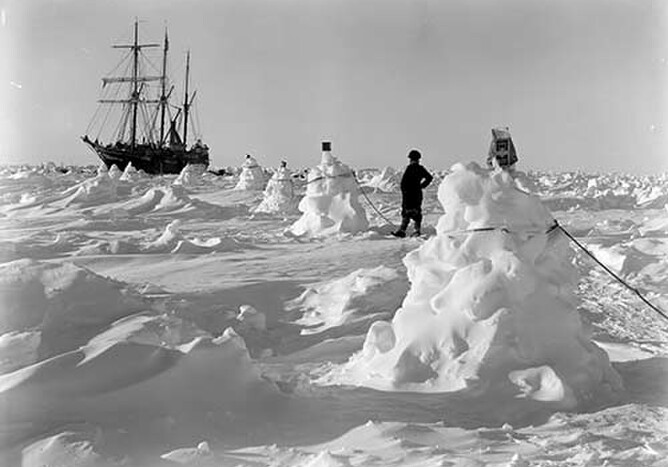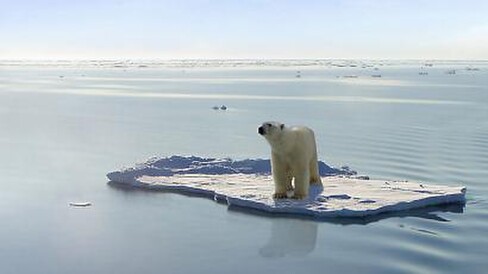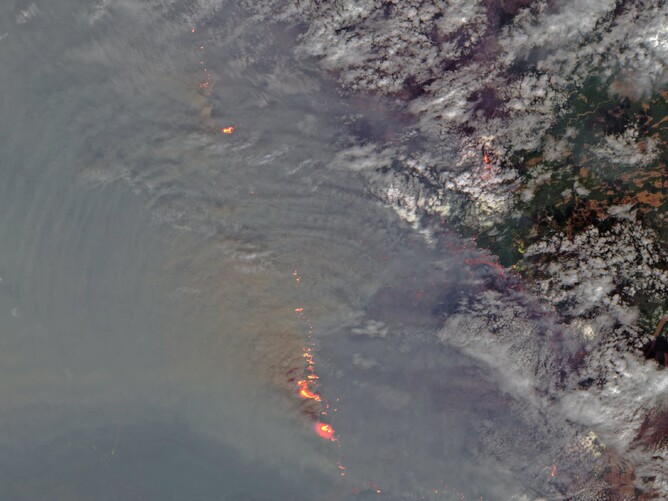It is a day to catch up with editing photos, photographing birds, learning more about my camera, blogging and reading. At 9.30 we have a biosecurity inspection clean and check. Here is Daniel doing a check with Tracy. We vacuum our pack and he checks it for little twigs and other bits. We are on our way to Macquarie Island, which is part of Australia. All the other six islands we are visiting are in New Zealand.
Before blogging about today I want to show you some maps. The first shows all the islands we are visiting.
The map below shows the currents in the area. This is important for food for albatrosses and whales. The Southern Ocean has no large land masses. The winds are often blowing, which keeps the 14 species of albatross airborne, and helps them take off when they are lifting off land. They are big birds and there is a lot of them to lift.
Even in the Southern Ocean there is a lot of rubbish. This map shows why. The ocean is a moving force. It is not still anywhere, and particularly here where there are no land masses. I am a keen swimmer and I often think of this when I am swimming at the beach. I am connected to all the sea water in the world, and every day I swim the water is different.
This map shows how the islands are perched on a continental crust that extends south and east of mainland New Zealand - part of a submerged mini-continent coloured red, orange and yellow. Between the Campbell Plateau/Bounty Platform region in the south and the Chatham Rise extending off the Canterbury coast is a huge undersea valley. The ocean floor beyond the crust drops to depths of up to 6000m. That's the area most likely to see whales. This is courtesy of the National Institute of Water and Atmospheric Research - NIWA.
Eric (one of the bird guides) is giving a slide presentation - Mollymawks and Albatrosses (Toroa in Maori). In his first slide he says all albatrosses and mollymawks love to follow fishing boats, for a free feed, or is it the air behind and beside?
I am going to try and remember what he said about the slides below.
These two big birds in the picture are the female and male Gibson albatross. These are critically endangered. And to make identifying them complicated, plumages of these birds can vary at different ages and at different times of the year. Albatross fly great distances in a day.
These are all mollymawks (also Toroa). Different beaks for different species - I don't know which is which yet.
Southern Royal albatross (toroa).
And on the water.
Northern Royal albatross (toroa).
Gibson's albatross (toroa).
Light mantled sooty albatross (toroa).
Snowy albatross (toroa).
White-capped (shy) mollymawk (toroa).
Salvin's mollymawk (toroa). Biggest mollymawk. It has a light grey head and bi-coloured yellow and cream bill.
Grey-headed mollymawk (toroa). Dark-grey head and bi coloured yellow and black bill.
That will do for now. We have just had a call to say there are sperm whales port side.
And a video.
There is another lecture - Alex on Expedition Photography.
Quite a lot to learn about photography.
I learnt about iso (needs to be high for shooting pictures with birds), shutter speed needs to be high with moving things, and aperture. A smaller hole for light means less light and more focus everywhere I think?
I learnt in this workshop to give animals space in front. Also to look at background, and to look with the naked eye and then follow with your camera the albatross, and then when it comes into view click the photograph.
These are all very helpful points. Now I have been waiting with elbows bent for an albatross to come into frame, and wondering why they don’t come! I also am afraid to touch anything on the camera other than the auto button. However photos could not be worse, so I will try.
I learnt there is a lot more to learn about birds and photography! I learnt to keep talking to my new camera buddies.
I went out on deck and tried to photograph birds. (I didn't have too much luck and thanks to Tracey and Don, and Dr John I managed a few.)
Next up is Judd's talk on Macquarie Island. Macquarie is an Australian island with an area of 12,875ha (about 1/3 bigger than Waiheke). It is 34 km long and 5 km wide.
It is also the only place on the globe that you can circle the globe and not meet land.
The rocks that formed Macquarie have been forced up like toothpaste from the ocean floor by the collision of two tectonic plates. This is the only place on Earth where mid-oceanic crustal rocks are exposed above sea level. And it appeared only 700,000 years ago - that is young compared to the Auckland Islands.
Sir Douglas Mawson who was instrumental in turning the island into a research station in 1919 said “This little island is one of the wonder spots of the world.”
In less than two centuries of human presence people’s attitudes to this remote southern outpost have shifted dramatically. At first it was seen as no more than a valuable source of riches to be plundered. A sealing captain Hasselborough named it for Lachlan Macquarie, Governor of New South Wales. Lachlan is one of our son's name. It was the era of harvesting seals, and 200,000 fur seals were taken over ten years. Then elephant seals were next. Their oil was used in lighting, as a lubricant and for rope making. Between 1820 and 1830 70% of the elephant seals were taken.
In 1911 Douglas Mawson lobbied the Tasmanian government to stop the animal oil industry and to set the island up for science and conservation. He succeeded in 1919.
These are remnants of the animal oil industry.
Humans brought rabbits, rats, cats and other invaders. Today, a far higher value is placed on the island’s global significance as a unique example of the processes that shape the island, and as a place where the richness of life is celebrated and studied, rather than slaughtered for profit. In 2011 a massive eradication project was started, and declared successful in 2014. All rats, mice and rabbits were eradicated, and the island is predator free.
Hunting teams and their dogs went after bait was laid , to look for surviving rabbits. In 2014 there were no more.
Another day there was Daniel's lecture titled “A Little Bit Windy”, but I'm including it here.
Daniel's lecture made me think and made me care. Here is my summary of his lecture, though I don’t think he did lecture. For me it was Daniel sharing about another way to look at our weather, and why it is changing. He made me think about weather differently and it left me wanting to participate more in what I could do differently to change the course the planet is heading. We are all in this together.
So I thought I would write about it here as a start.
He started with some photos from Frank Hurley. He was a person who liked to doctor photographs. He was the pioneer of things like photoshop. He was also a master in taking photos of the way you feel. And he would change the photograph. He was more of an artist than a documentary. He changed the way people think by having a photo be about mood. He let you time travel.
If you have ever had a strong wind and tried to stand up in it, somebody in the past has done that too. They will have had the exact experience you had with the weather. And you experienced this by his arty photographs. This is titled 'Trapped in the Ice'.
There are some rules/laws which allow the same patterns of weather to occur over time. The rules/ laws are simple and they are around the relationship between wind, temperature and rain happens around land.
First law - Temperature, rain and winds are affected by size of a land mass. The bigger the landmass and how far a place is from the ocean will affect its temperature, and wind. This is also called Continentality.
The larger the land mass the further it is away from influence of the ocean. Smaller islands like Macquarie island, the Snares, the Antipodes, the Auckland Islands and New Zealand have a climate moderated by the ocean. This means temperatures are not extreme and more moderate.
Temperatures can get extreme in the interior of a large land mass. Alice Springs in Australia gets hot in the day and cold at night.
Second law - The absorption of the sun's energy in a type of land mass affects climate. A landscape of ice reflects the sun and stays icy or cold. This is called reflectivity or Albedo.
Antarctic white cap is pure white and it is not disturbed by rocks. It is just white so sunlight bounces back. 90 percent bounces back, 10 percent gets absorbed. Mud which is the opposite of ice absorbs the sun and absorbs up to 80 percent of the sunlight. These are two extremes.
Another way landscapes affect weather is through a fohn wind. A fohn wind is a wind that warms as it falls down a mountain range, eg. in the French Alps the cold wind hits the mountains and comes down the other side as a warm wind. Same in Christchurch New Zealand. The cold wind hits the mountain and because the mountain is in the way, as descends it heats the air and produces a warmer climate than the normal.
Fourth law - The higher you go on land the colder it is. That is the rule. Every 1000m drops 10 degrees Celsius.
Fifth rule/law - Where you are on the globe affects the wind that you experience. The 50th parallel of longitude which is roughly where Macquarie is has almost no other land mass at that latitude. This means wind and weather have huge distances to gather speed and power.
There are big inconsistencies happening in our weather now.
Why do the big ice packs, the North and South Pole (the Arctic and Antarctic) affect us all so much? And are so critical to Earth’s weather?
The Arctic is warming and it is further advanced. It is no longer cold enough. Fires in North America are spreading their ash across Greenland. The flames hit and creates a hole in the ice and melt the ice. It exposes rock in Greenland. Not white any more and this absorbs the sun and the ice melts. Once the ice melts it gets blacker and everything is now absorbing rather than reflecting sunshine. Because Greenland is so big this means warmer temperatures everywhere. So you get winds where they have not been before, and you get weather more fierce than it was.
When you have the engines of our world spluttering you have a huge problem.
I care about this for my children and my grandchildren, who I hope will arrive some day. I am like any other living species - our job of life is to survive. We have the privilege of being a high evolving primate who can cause things. This from a satellite in the North shows fires spreading .
Any ideas on getting our two big engines oiled again?
So you see you there is a lot you can do on a sea day without internet.
